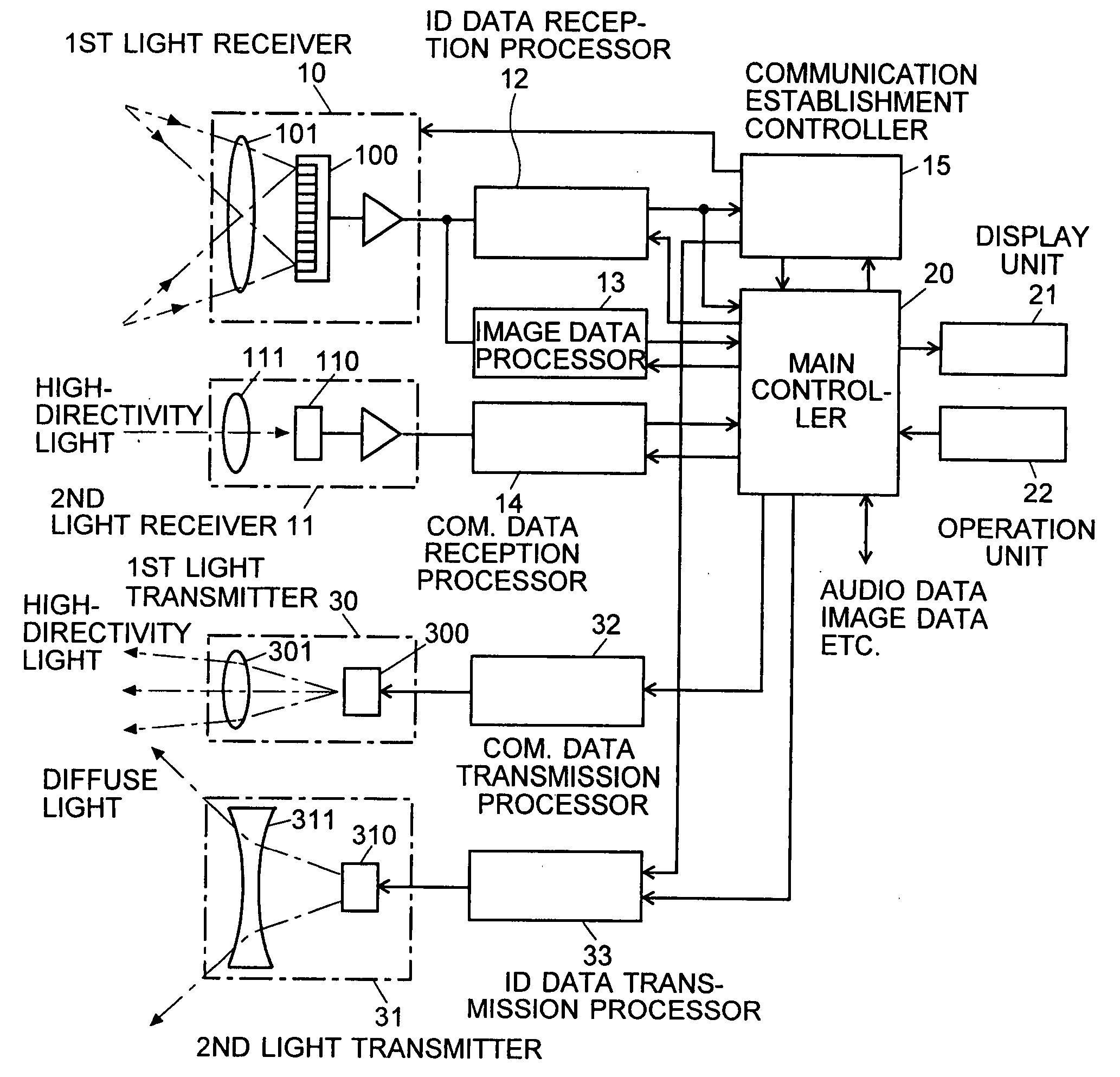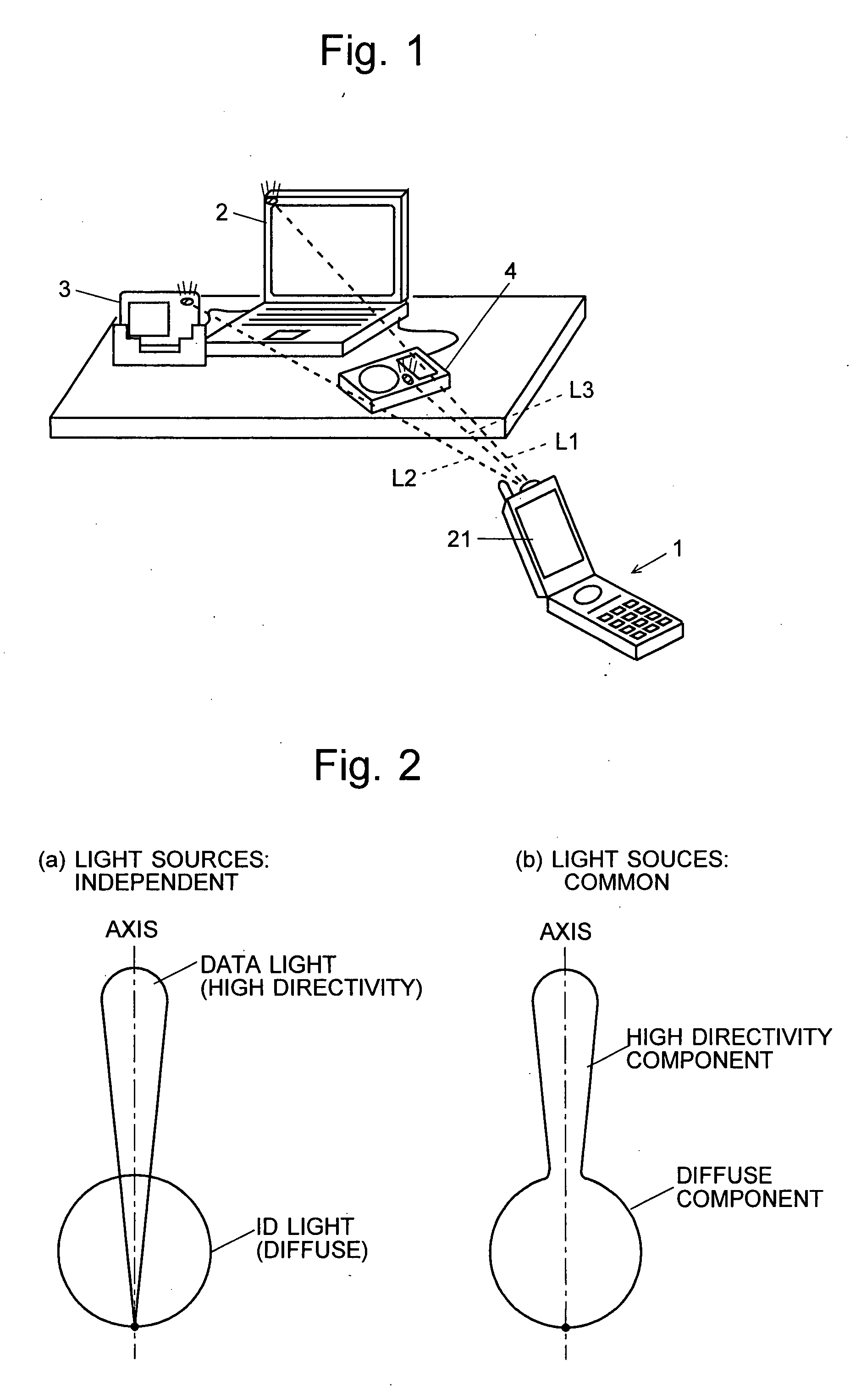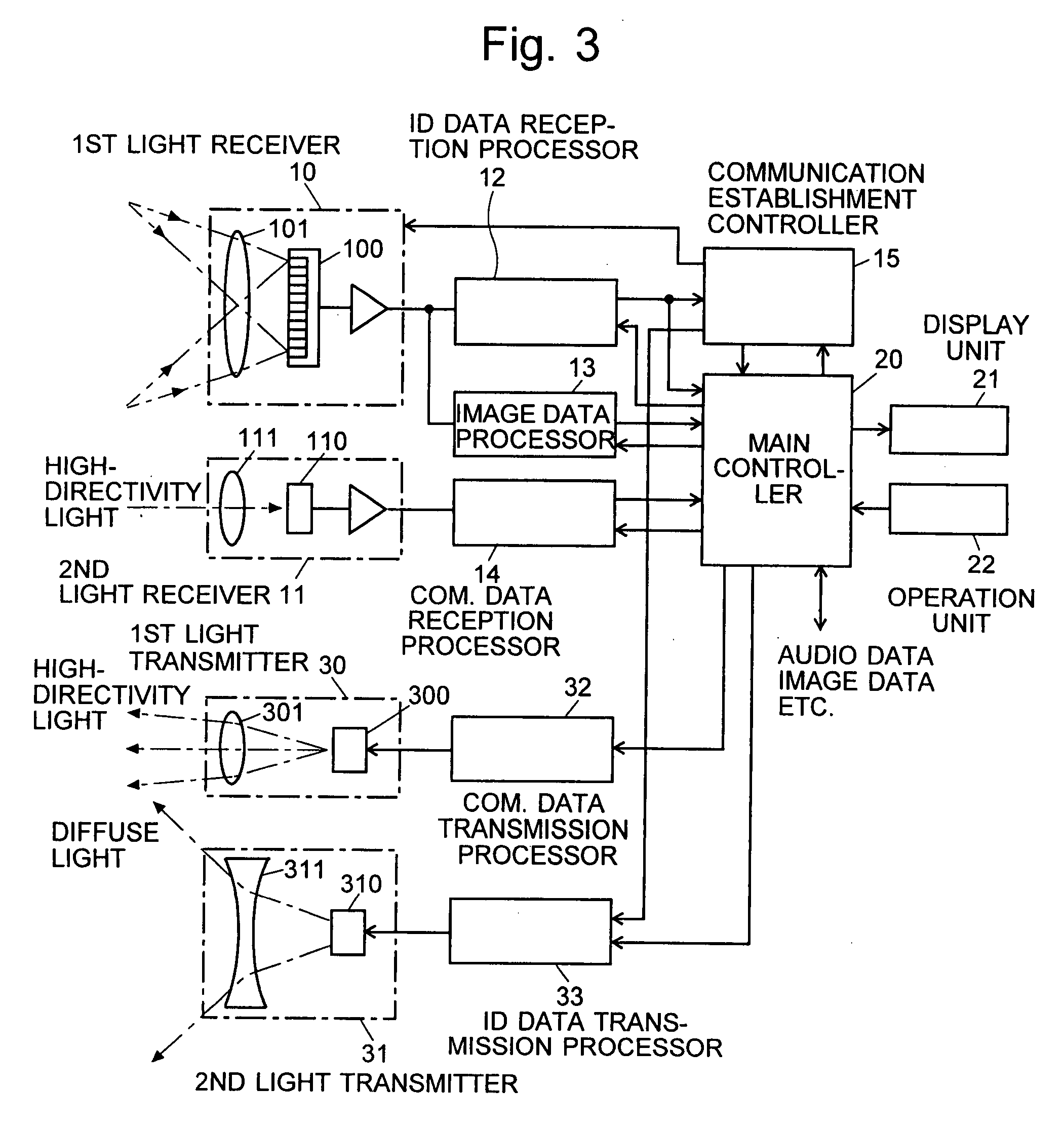Information-Processing System Using Free-Space Optical Communication and Free-Space Optical Communication System
- Summary
- Abstract
- Description
- Claims
- Application Information
AI Technical Summary
Benefits of technology
Problems solved by technology
Method used
Image
Examples
Embodiment Construction
[0069] An embodiment of the free-space optical communication system using an information-processing system according to the present invention is described in detail, with reference to the attached drawings.
[0070]FIG. 1 is an overall schematic diagram showing a mode of using the free-space optical communication system according to the present embodiment. In this example, the mobile phone 1, which is hand-held by an operator, corresponds to the information terminal of the present invention and is capable of free-space optical communication. The personal computer 2, the digital camera 3 and the portable music player 4, which are located relatively close to each other, are communication nodes capable of two-way communication with the mobile phone 1. The mobile phone 1, the personal computer 2, the digital camera 3 and the portable music player 4 each emit a beam of light containing an ID signal as information (this light called the “ID light” hereinafter). The above-listed devices also...
PUM
 Login to View More
Login to View More Abstract
Description
Claims
Application Information
 Login to View More
Login to View More - R&D
- Intellectual Property
- Life Sciences
- Materials
- Tech Scout
- Unparalleled Data Quality
- Higher Quality Content
- 60% Fewer Hallucinations
Browse by: Latest US Patents, China's latest patents, Technical Efficacy Thesaurus, Application Domain, Technology Topic, Popular Technical Reports.
© 2025 PatSnap. All rights reserved.Legal|Privacy policy|Modern Slavery Act Transparency Statement|Sitemap|About US| Contact US: help@patsnap.com



